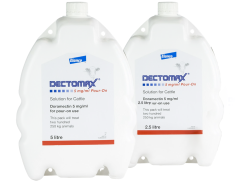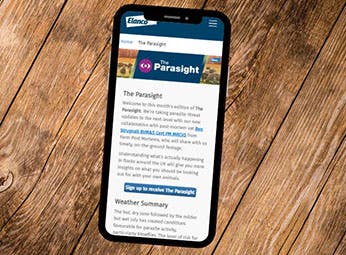Cattle turnout
When it comes to turnout, in addition to thoughts on feed availability and weather conditions there are a few parasite issues we should also consider.
Treating for liver fluke at turnout
Where there is a risk of liver fluke, most farms will treat cattle around housing time. However, depending on the timing of treatment, and the active used, some liver fluke may have survived to adulthood and now be producing eggs to contaminate pastures for the next fluke season.
Checking for fluke eggs before turnout, and treating positive groups with a product to target adult fluke (i.e. containing albendazole, oxyclozanide or clorsulon) will help reduce the liver fluke risk to all grazing stock for the autumn fluke season.
Learn more about liver fluke, and watch our webinar ‘Liver Fluke – Test Don’t Guess’ with Moredun and the NSA on. For more information, check the updates from COWS.
Controlling roundworms at turnout
Once the grass starts to grow, roundworms will also be active (lungworm and gastrointestinal worms). It takes up to two full grazing seasons for cattle to develop immunity to some species of gut worms, but some exposure is required for immunity to develop. This can be achieved by strategic treatments with an appropriate wormer such as Dectomax™ Pour On, which contains doramectin.
Worming at turnout (week zero), and eight weeks later, effectively manages gut worm burdens in the animal whilst also minimising pasture worm burdens, giving optimum growth rates while allowing some immunity to develop1.
Coccidiosis in cattle
Coccidiosis in calves is spread by faecal-oral transmission (i.e. contamination of food or water with faeces containing coccidial oocysts), so any delay to turnout may increase the risk of this infection spreading within a group of calves. While it can cause serious disease in individual animals, the majority of the financial impact within a group is caused by decreased weight gain in the apparently healthy animals. Consideration should be given to targeting groups of calves at or around turnout time to prevent disease and growth checks at this time.
Controlling flies at turnout
Flies are one of the main ectoparasites that affect the health, welfare and productivity of cattle. The main months for fly problems are May to August.
Control of flies can be achieved by applying Flypor™, when cattle are gathered for a mid season worm treatment (e.g. 8 weeks after turnout if using Dectomax™ Pour On at 0 & 8 weeks), if dosed at turnout. Flypor™, is a synthetic pyrethoid pour on that also treats lice and mange mites; which can be a problem in early spring, causing irritation and reduced productivity.

Dectomax™ 5 mg/ml Pour-on Solution for Cattle
For treatment of worms at housing or turnout and 8 weeks later; for control of lice & mange mites.
- Vercruysse et al, Vet Para 58 (1995) 27-34, Control of gastrointestinal nematodes in first grazing season calves by two strategic treatments with doramectin.


